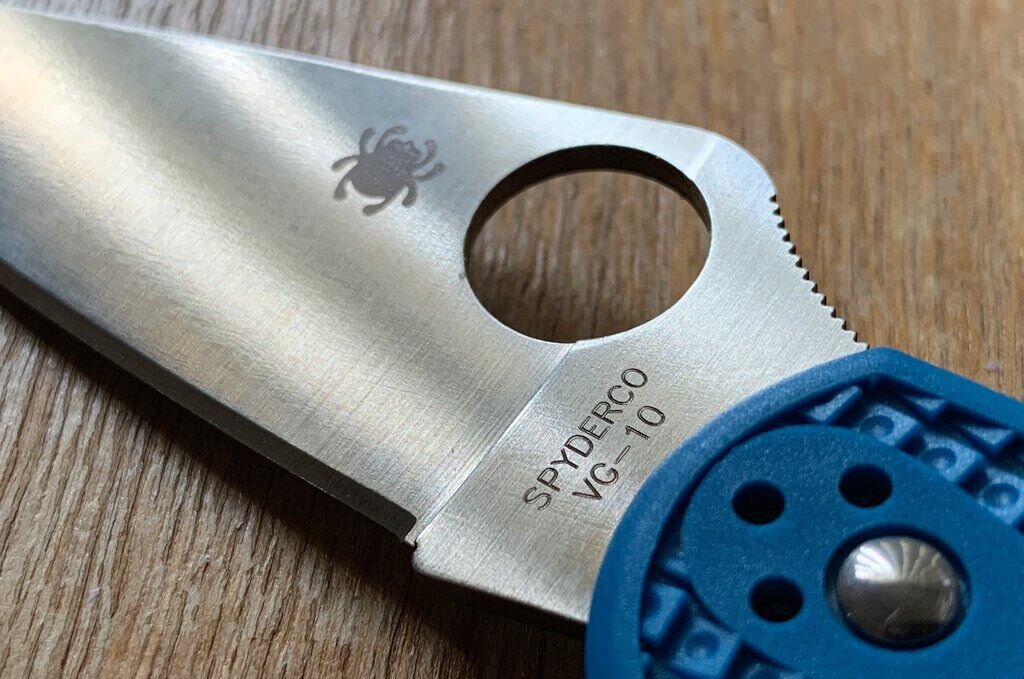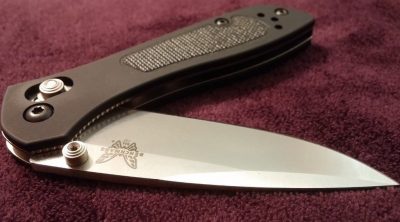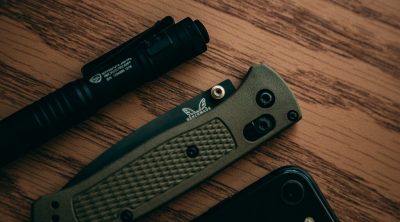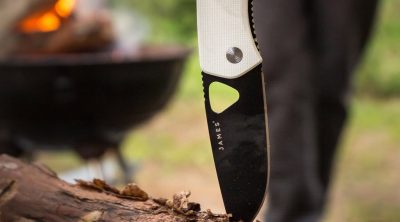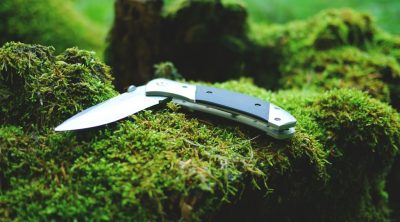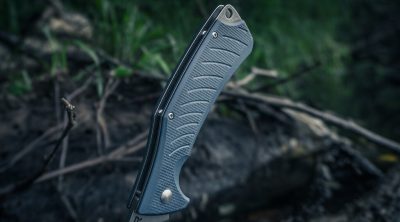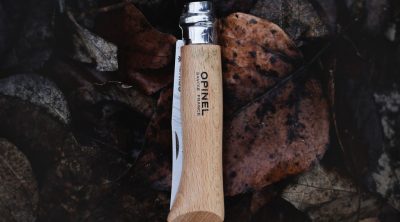One of the most important aspects in choosing the best EDC pocket knife is by knowing the type of steel used in the blade. The blade steel will determine how well the knife handles the tasks at hand. When buying an everyday carry knife, choosing the best knife steel for your needs is very important.
A knife steel is basically an alloy composed of mostly iron and carbon with a mix of various elements. This gives the blade essential qualities suited for specific applications.
The different types of steel used in knives will have the following properties. The following properties is used to look for the best everyday carry blade steel.
Knife Blade Properties
Knife blades are judged on their cutting ability, and to help the knife achieve its purpose is by using the right kind of steel. Here are some of the factors on how to find the best steel for a knife to perform well.
Sharpness and edge retention – This is basically how sharp the knife is, and how long it stays sharp even after repeated use. You will want a knife that is easy to sharpen an will retain its cutting edge longer. The hardness of a blade steel will have an effect on how sharp it can be. Knife blades made from softer steel tend to not hold an edge well, but is easy to sharpen.
Durability – Determines the blades toughness and resistance to wear. Tough blades are resistant to chipping and cracking under heavy use and will be able to flex without snapping.
Hardness – This is characterized by how well the steel resists deformation when subjected to intense pressure (measured on a Rockwell scale).
Corrosion resistance – Refers to how well a knife resists rust and corrosion. Certain types of steel are more suited to humid, acidic, and saltwater environments where there is a high potential of causing rust and pitting. Stainless steel is less prone to rusting compared to carbon steel.
Common Alloying Elements for Steel
The properties of steel can be changed by adding certain elements during manufacturing process. Here are some of the most common elements and its properties when added to steel.
- Chromium – Necessary element for creating stainless steel and makes it corrosion resistant. Steel should have at least 10.5% of chromium present for it to be considered stainless.
- Cobalt – Increases the strength of the steel.
- Copper – Used for added durability and corrosion resistance.
- Manganese – Enhances hardness, strength, and durability of the blade but can become brittle if too much is present.
- Molybdenum – Improves hardness of the blade.
- Nickel – Makes tougher steel as it adds durability and corrosion resistance.
- Tungsten – Adds wear resistance
- Vanadium – For added toughness, durability and wear resistance.
Common Types of Knife Steel
Knife making steels has a number of different types and varieties, but generally speaking, they are classified according to a few main categories.
Carbon – Carbon steel or high carbon steel blades is strong durable. Generally used for knife blades where these traits are important. It keeps a sharp edge and very easy to sharpen. The only disadvantage to knife blades using this type of steel is prone to corrosion and rust and needs frequent maintenance. The most popular choice of carbon steel steel for knives is 1095.
Tool – This type of material is commonly used in industrial tools when heavy duty cutting is involved. Hence it is incredibly strong, hard, and has good wear resistance. A few of the most common tool steels are D2, A2, CPM series, and M4.
Stainless – The most popular type of knife steel which has good corrosion resistance. It has chromium added to carbon which makes it less prone to rusting. A popular choice in EDC knives (:linkto) and includes 154CM, 400, AUS series, CPM SxxV series, Sandvik, CrMov, CTS, and VG series.
Popular Knife Steel
Here are some of most common knife steel found in today’s every day carry knives.
CPM-S110V
When it comes to conventional knife blade steel, S110V is considered to have the greatest wear resistance and edge retention quality. It has the same characteristics as S90V but with higher hardness. This steel is found in Spyderco’s popular Military, Paramilitary 2, Para 3, Manix, and Native knife models.
CPM-S90V
This is a unique powder-metal tool steel produced by Crucible. It is a very hard steel that is difficult to sharpen. Being hard to sharpen also means that the blade will keep its edge longer. It has improved wear resistance compared to 440C or D2 tool steel. Due to its inherent qualities, it is rarely used due to its high price and typically found in custom-made knives.
CPM-S35VN
S35VN is considered as an upgraded version of S30V, this steel is notably used in higher end knives. It has similar properties as S30V and distinguished by its reduced vanadium and added niobioum content. Knife makers find this steel is easy to machine, grind, and polish. Knives using this steel is characterized by chip and wear resistant blade.
CPM-S30V
S30V steel is an American made powdered steel and considered one of the best EDC blade steel. Widely available and known to be used by one of the best EDC knives, Chris Reeve’s Sebenza series of knives. Higher carbon and vanadium content resulted in a great steel with superior edge retention, toughness, and abrasion resistance.
154CM
154CM steel is typically found in more premium knives. It is a high carbon steel with added molybdenum. 154CM has a good balance of toughness, hardness, and corrosion resistance. It has better edge retention than lower end steel. A powder version of the same steel exists, known as CPM-154 and produced using Crucible Powder Metallurgy. This is a better steel with finer carbide particles resulting in a better steel with excellent edge retention, chip resistance, and cutting ability.
D2
D2 is a tool steel that is widely used in various industries. It is semi-stainless steel that is well known for being hard and tough which makes it one of the best steel for a knife in the market. It has great edge retention although it can be fairly difficult to sharpen.
VG-10
VG-10 is a Japanese steel and known for its toughness and corrosion resistance due to added chromium and vanadium. This steel is commonly used by Spyderco in their folding knives and is also a widely used Japanese stainless steel for chef’s knives. It is easy to sharpen and can hold a very sharp edge.
14C28N
Made by a Swedish company called Sandvik, 14C28N is one of the higher end steel from their series of steels. The added nitrogen to this steel gives it additional corrosion resistance. If you are after the best budget knife steel, go find knives that uses this steel in their blades.
8Cr13MoV
A Chinese produced steel that is also considered to be in the budget steel territory. It has similar properties to AUS-8 but with higher carbon content therefore having greater strength.
1095
1095 is the most popular carbon steel and belongs to the 10-series of steels. This is a high carbon tough steel with good chip resistance. It can rust easily so it needs regular maintenance. Wipe it clean after use and apply a thin coating of oil to guard against moisture. As this is an inexpensive type of steel, it is typically found on survival knives, larger blades, and swords.
440A
440A stainless steel is part of the classic 440 stainless steel group. This type of steel exhibits good rust resistance and its moderate carbon content makes it durable. Typically found on budget knives.
440B
Another low-end steel with similar characteristics to 440A but has higher carbon content resulting in better edge retention.
440C
Considered as a higher end steel compared to 440A and 440B. Has far more carbon content compared to those two which gives it better hardness and better corrosion resistance.
420HC
A well known standard knife steel and considered a low cost steel so you will find it on most budget knives. The name stands for 420 High Carbon and is the most common of the 400 series of steels. 420HC steel combines excellent hardness and good corrosion resistance. Well known for holding a good edge and its ease of sharpening.
AUS-10
Another low cost steel with comparable properties to 440C. Incredibly high carbon content means that this blade steel is easy to sharpen and gives razor sharp results. It is also hard and has good flexibilty and offers better performance than AUS-8.
AUS-8
AUS-8 is an affordable Japanese steel with similar characteristics to 440B. It may not considered as premium steel but it still fairly hard and holds an edge better than AUS-6. Having more vanadium than AUS-6 means that it holds a good edge.
AUS-6
This is a low quality steel which has similar properties to a 420. It has better edge retention and somewhat resistant to corrosion.
Other Popular Steels for Knives
H1
From a Japanese steel manufacturer, H1 steel is resistant to staining and has exceptional corrosion resistance. This makes it ideal for knives used primarily in saltwater environments, and quite popular steel for diving knives. While it doesnt have good edge retention its good performance in wet environments makes up for it.
Elmax
Elmax is a high chromium, vanadium, and molybdenum premium powdered steel made by a Swedish company. This high-end stainless knife steel steel may come at a price but it offers good wear and corrosion resistance. Has excellent edge holding properties and easy to sharpen. It can be considered as one of the best all-around steel for knives.
M390
Another European steel that is also good all-around steel as it has exceptional toughness, wear resistance, and corrosion resistance. M390 steel is not that easy to sharpen but when done correctly, the edge will last longer. No frequent sharpening necessary.
Maxamet
A powder steel produced by Carpenter, Maxamet has an exceptionally high hardness rating for a steel blade. It results in great edge retention but quite difficult to sharpen. This is a non-stainless steel so it is prone to corrosion and extra care is necessary. Spyderco produces popular knife models using Maxamet steel, the Native 5 and Manix 2.
Final Thoughts
When we think about the best knife steel, its not only about getting the most premium steel available. Keep in mind other factors to consider when getting the best. Remember that not all knife blades are equal and there are differences other important aspects. These includes heat treatment, grind, geometry, and factory edge quality to name a few.
Choosing the best steel is deciding on a good balance of several qualities. Do you prefer a knife with good corrosion resistance at the expense of holding a good edge? Is having a tool steel a must even though it is more difficult to sharpen? At the end of the day your EDC knife must suit your purpose and needs.
What’s your favorite knife steel? Let us know in the comments.
